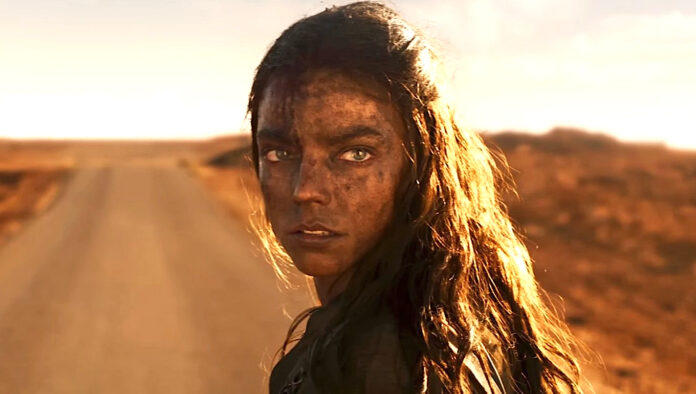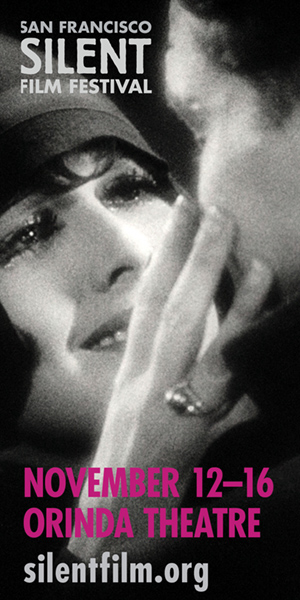Many a movie plot has been driven by revenge. But probably no screen franchise has had quite so much combined driving and revenging as George Miller’s Mad Max one, which started as a low-budget Australian indie in 1979, enjoyed an Evil Dead 2-like bigger/better de facto remake in The Road Warrior (1981), and suffered Evil Dead 3-like elephantiasis in 1985’s The Road Warrior. It then went to sleep for thirty years while
Miller had a couple problematic Hollywood production experiences before veering into largely-animated family films with the Babe and Happy Feet series. In 2015 it roared back with Mad Max: Fury Road, which had nearly everyone in a state of engorged ecstasy—though not me, as I found its too-incessant action more monotonous than exciting.
Still, few directors can claim to ever have staged action with the complex precision Miller routinely manages. And it’s not his fault that The Road Warrior in particular set a template that has been over-imitated ever since, perhaps diminishing the impact of his own pioneering work. Where nearly 40 years ago now that movie seemed fairly unprecedented in its relentless, propulsive ingeniousness, now just about every CGI-cluttered mall flick tries for the same effect. The new Furiosa: A Mad Max Saga lets Miller once again show how it’s done, and for my money there’s more variety this time around, as well as the inevitable spectacular setpieces. Still, the sum impact is somehow less than memorable. In the end, these 148 minutes feel like a brilliantly executed but bloated footnote to an overall narrative arc than grows more vague with every further chapter.
It’s a prequel to Fury Road, with Charlize Theron’s one-armed warrior woman now played first as a child (Alyla Browne) kidnapped from her hidden agrarian matriarchal community by biker trash of the desert Wasteland. (How they didn’t know this idyllic enclave of “abundance” existed, when it’s apparently just a day’s ride from their base camp—or can even find it again afterward—is one of several major logic gaps here.) In an early adulthood that encompasses passing as a boy and a mute, Furiosa is played by Anya Taylor-Joy. She gets passed between different warring patriarchal factions in the arid dystopian future until lucking into a platonic partnership with a driver (Tom Burke) making high-security, high-risk supply runs between settlements.
The physical canvas is bigger than ever, but the chaptered narrative progress in the script by Miller and actor Nick Lathouris (who was in the original Mad Max 45 years ago) feels like condensed highlights from several books in a pulp fantasy fiction series a la the original Conan the Barbarian books. Any binding mythology gets crowded out by the incessant pileup of car crashes, bullet-riddled extras, explosions, et al., just as Tom Holkenborg’s score (and even dialogue) is often lost in the din of engine noise.
Umpteen colorfully coiffed, clad, and frequently disfigured characters appear, many with names like “Scrotus,” “Toe Jam,” “Smeg,” “Rictus Erectus” and so forth. But they’re just cannon fodder, undefined beyond their fugly looks. Dazzlingly engineered sequences with Rube Goldbergian gizmos (like motorcycles pulling parasailers that scramble onto big rigs at high speed) are kinetically exciting, but have little emotional force because we frequently aren’t quite sure who is fighting whom, let alone why.
Taylor-Joy is asked only to strike variously steely/raging attitudes; greasepaint makeup and the stunts flying around her do the “acting.” After a while, Furiosa seemingly stops wanting to return “home,” seeking only vengeance—against everybody, but mostly Wasteland warlord Dr. Dementus. As played by Chris Hemsworth, that figure feels like a less-hygienic Thor, a similarly vainglorious semi-parody of flowing-locks, bulging-biceps superheroism. He’s too comedic to seem a fitting target for her humorless wrath—we’re not even sure how he became a leader, his main qualification being status as the sole man here allowed to be handsome. The disconnect between that lightweight performance and the grim, grungy, gory world Furiosa inhabits defuses their conflict, making this a movie that constantly hurtles forward yet runs on scant motivational fuel.
Nonetheless, as pure spectacle, Furiosa is often close to awesome—lacking just the empathetic involvement that any real emotional stakes would have allowed. There’s one long chase/combat sequence about an hour in that is a thing of pure beauty, in editorial and stunt terms. That George Miller is still devising, not to mention acing, such rigorous action cinema (whose apparently grueling shoot some participants have complained about, including Taylor-Joy) is pretty amazing for a man on the brink of 80. And, yes, he is reported to be already at work on a next entry. Furiosa: A Mad Max Saga opens in theaters nationwide this Fri/24.
Help us save local journalism!
Every tax-deductible donation helps us grow to cover the issues that mean the most to our community. Become a 48 Hills Hero and support the only daily progressive news source in the Bay Area.
Furiosa is the most expensive Australian movie ever made (at about US$230 million), and looks it. A career spent laboring in comparatively subterranean budgetary realms is that of William Lustig, who gets a “genuine tribute” from Movies for Maniacs at the 4 Star in SF. He’ll be there in person, with an onstage interview/Q&A between screenings of 1980 sleaze horror cult fave Maniac and the recently restored 1983 Vigilante.
Still busy as a producer (and occasional actor), Bronx-born Lustig has left directing behind the last couple decades. But he carved out a memorable niche in that role amongst exploitation-meisters in the quarter-century or so preceding. Formative years spent in grindhouses naturally led to first features of an XXX nature (such as Hot Honey, under the pseudonym “Billy Bagg”), then to Maniac, which starred Joe Spinell as a milquetoast whose psychopathology has led to a hobby of stalking and scalping women. One of the most nastiest slashers of the era, it was originally released unrated, and stirred angry arguments about sadistic screen misogyny in some quarters.
But its commercial success meant he was able to attract name actors (including Robert Forster and Fred Williamson) to the slicker Vigilante. Its tale of respectable citizens taking on the usual cackling punk-scum “animals” terrorizing the neighborhood was among many imitations of Death Wish (a film on which Lustig was an apprentice editor) then flooding the market, but its combination of shameless content and solid execution still pops. Dig its original trailer, an expression of reactionary horror at the “asphalt jungle” so jingoistically current it might as well have been crafted by Fox News, or one of SF’s very tech billionaire YIMBYs.
Sticking close to the reliable elements of action, suspense and horror, Lustig peaked as a director with the first two Maniac Cop films, energetically outrageous, tongue-in cheek mixes of The Terminator and 42nd St. cinema. Later he’d found Blue Underground, which provides an invaluable service rescuing, preserving, and reissuing vintage international exploitation features on home formats. Info on the Movies for Maniacs event is here.





